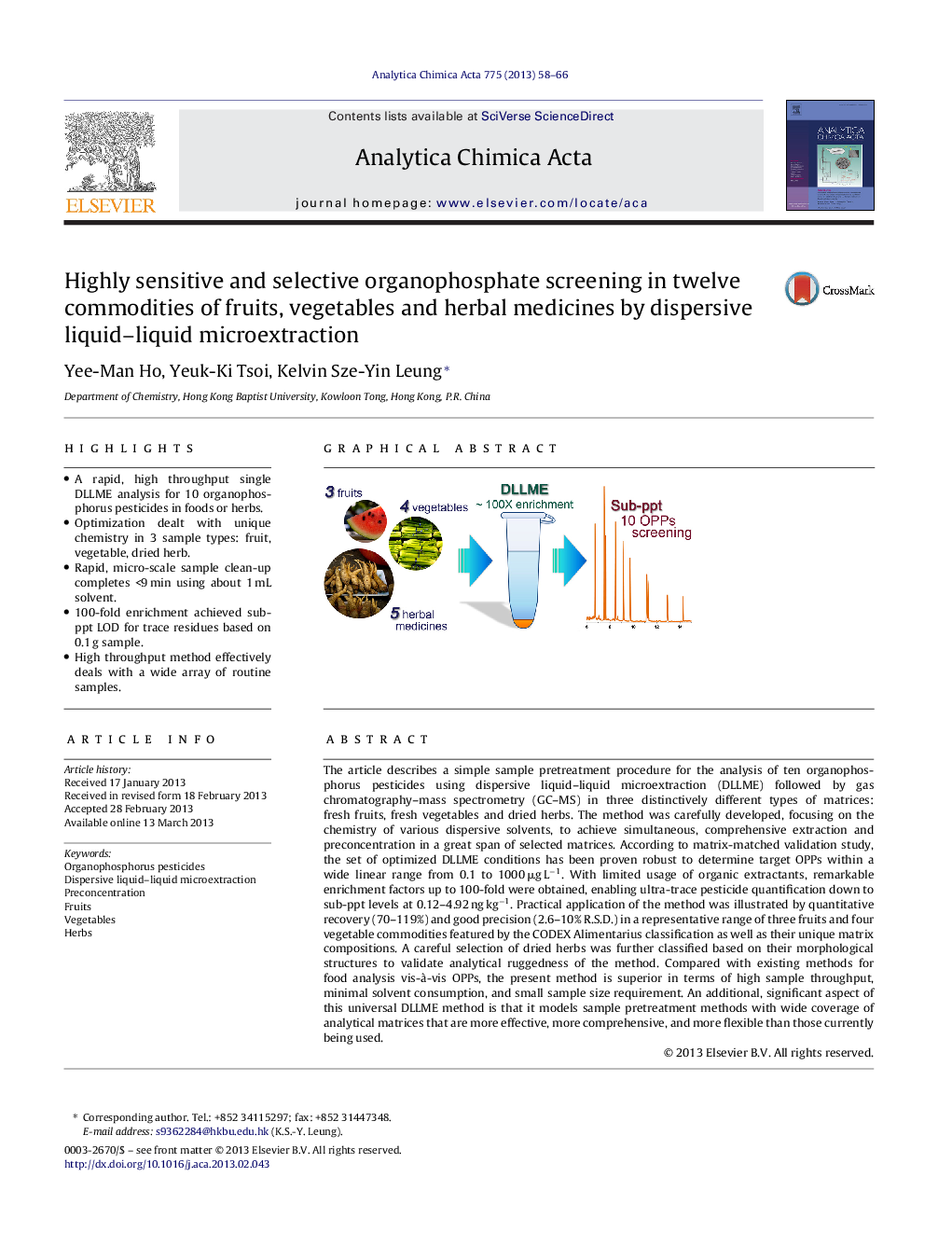| کد مقاله | کد نشریه | سال انتشار | مقاله انگلیسی | نسخه تمام متن |
|---|---|---|---|---|
| 1164994 | 1491057 | 2013 | 9 صفحه PDF | دانلود رایگان |

• A rapid, high throughput single DLLME analysis for 10 organophosphorus pesticides in foods or herbs.
• Optimization dealt with unique chemistry in 3 sample types: fruit, vegetable, dried herb.
• Rapid, micro-scale sample clean-up completes <9 min using about 1 mL solvent.
• 100-fold enrichment achieved sub-ppt LOD for trace residues based on 0.1 g sample.
• High throughput method effectively deals with a wide array of routine samples.
The article describes a simple sample pretreatment procedure for the analysis of ten organophosphorus pesticides using dispersive liquid–liquid microextraction (DLLME) followed by gas chromatography–mass spectrometry (GC–MS) in three distinctively different types of matrices: fresh fruits, fresh vegetables and dried herbs. The method was carefully developed, focusing on the chemistry of various dispersive solvents, to achieve simultaneous, comprehensive extraction and preconcentration in a great span of selected matrices. According to matrix-matched validation study, the set of optimized DLLME conditions has been proven robust to determine target OPPs within a wide linear range from 0.1 to 1000 μg L−1. With limited usage of organic extractants, remarkable enrichment factors up to 100-fold were obtained, enabling ultra-trace pesticide quantification down to sub-ppt levels at 0.12–4.92 ng kg−1. Practical application of the method was illustrated by quantitative recovery (70–119%) and good precision (2.6–10% R.S.D.) in a representative range of three fruits and four vegetable commodities featured by the CODEX Alimentarius classification as well as their unique matrix compositions. A careful selection of dried herbs was further classified based on their morphological structures to validate analytical ruggedness of the method. Compared with existing methods for food analysis vis-à-vis OPPs, the present method is superior in terms of high sample throughput, minimal solvent consumption, and small sample size requirement. An additional, significant aspect of this universal DLLME method is that it models sample pretreatment methods with wide coverage of analytical matrices that are more effective, more comprehensive, and more flexible than those currently being used.
Figure optionsDownload as PowerPoint slide
Journal: Analytica Chimica Acta - Volume 775, 2 May 2013, Pages 58–66